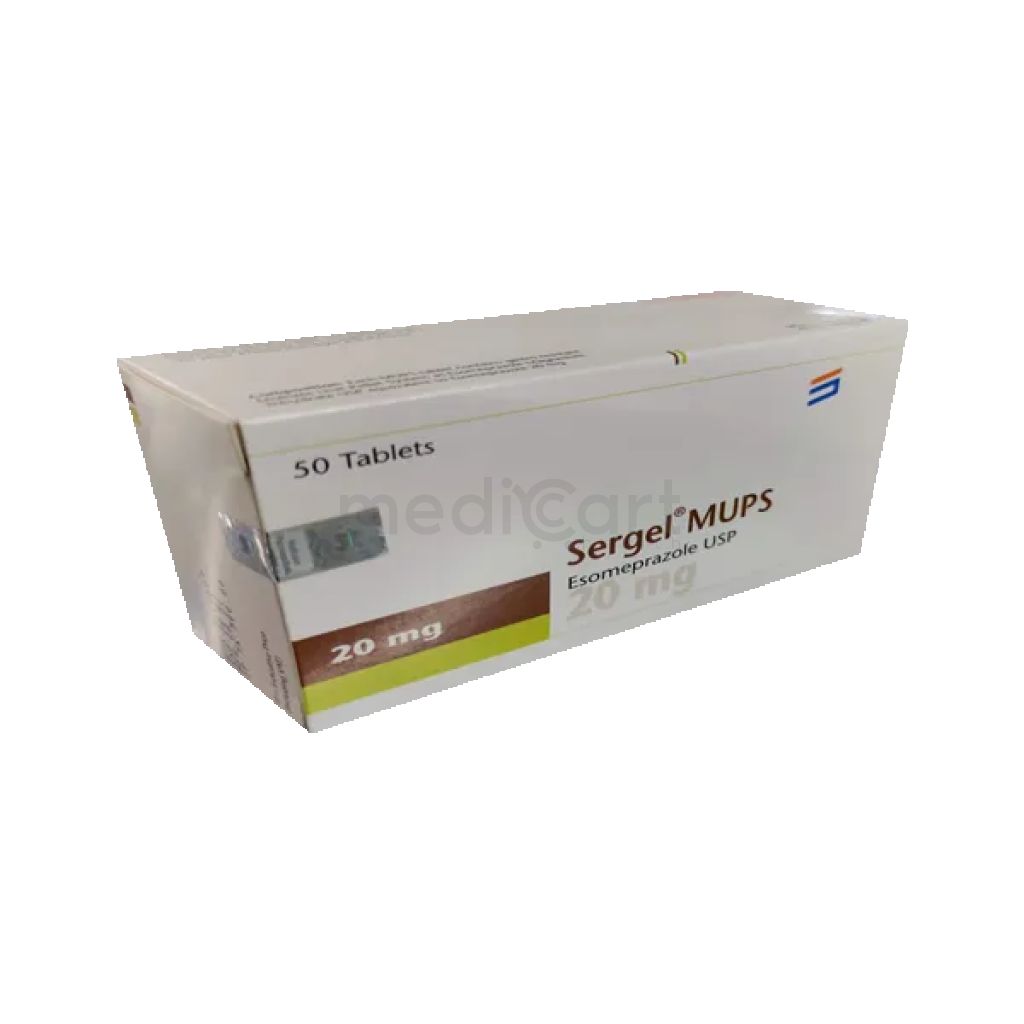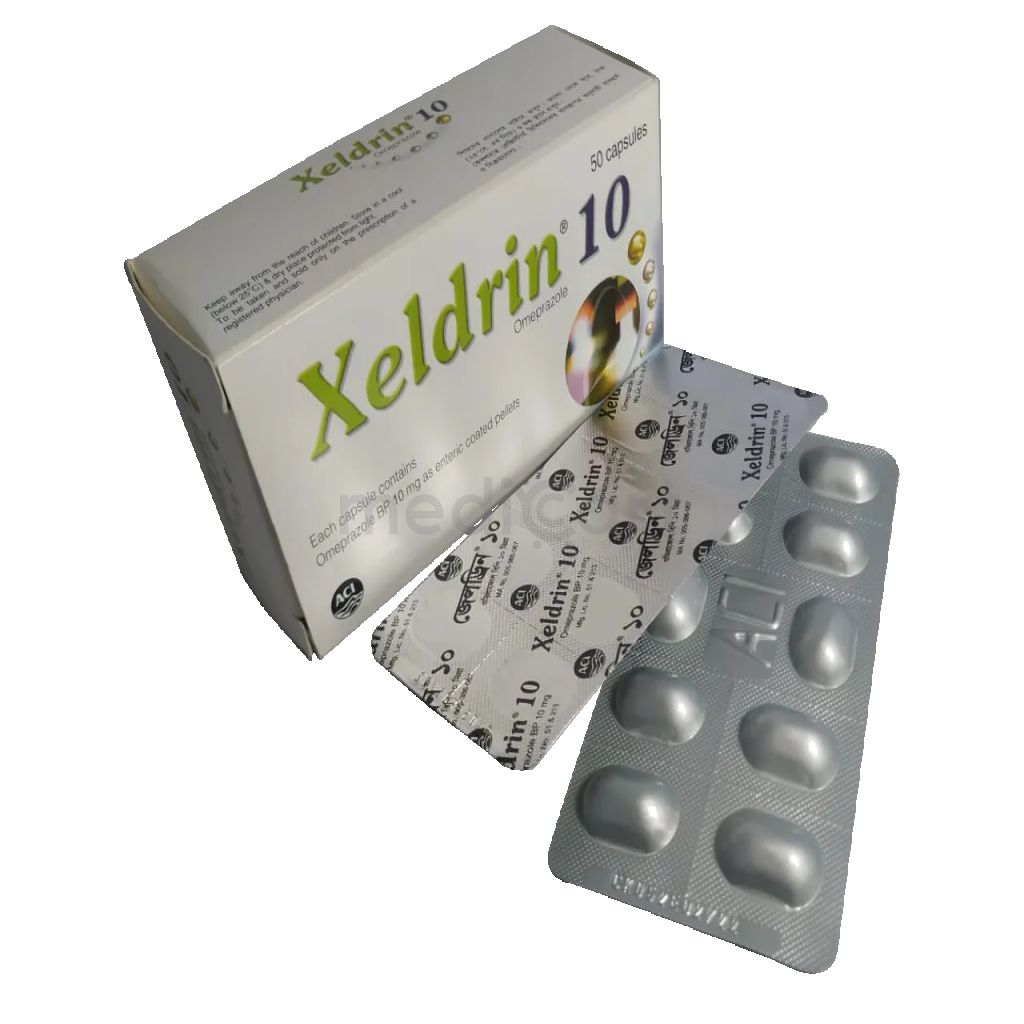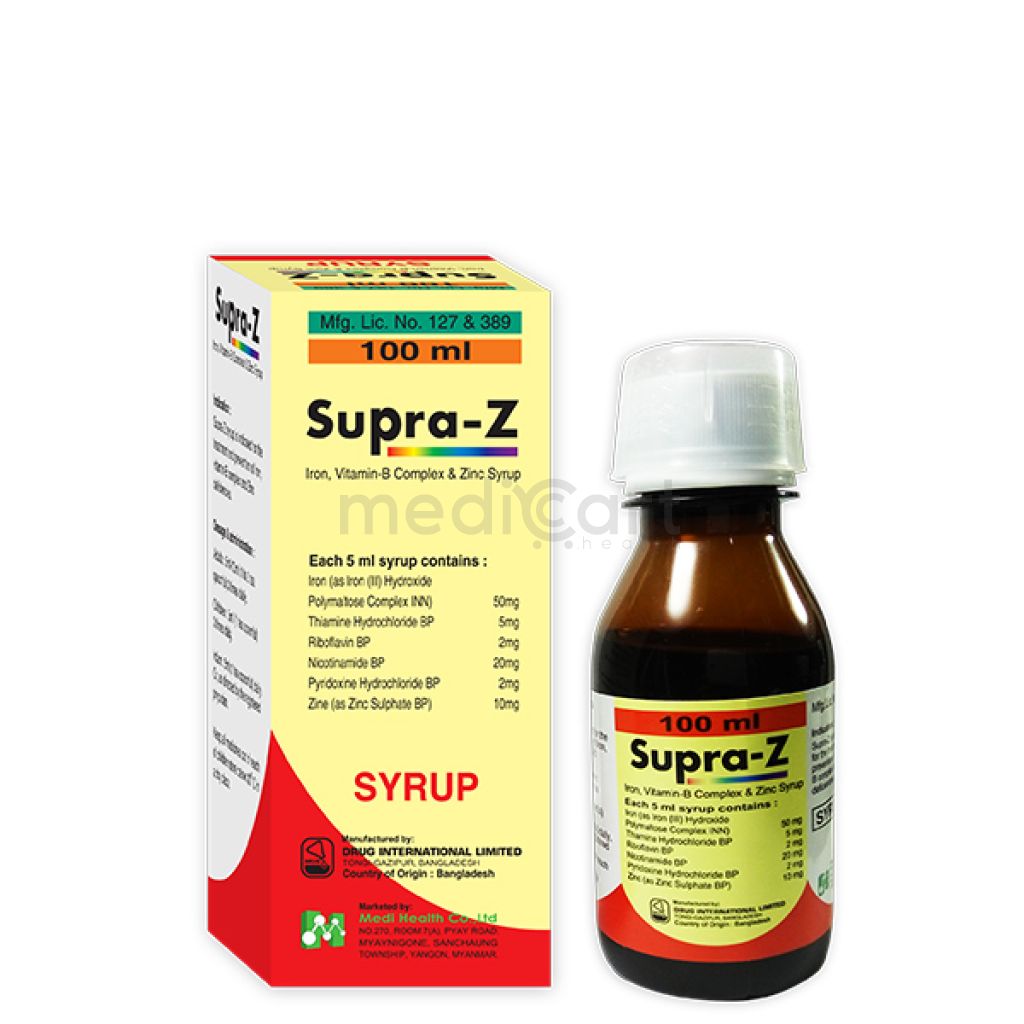

Sergel Mups - 20mg
Tablet* Delivery will be done in Dhaka city only.
More Information About - Sergel Mups - 20mg
Description
Generic Name
Esomeprazole Magnesium Trihydrate
Precaution
Paediatric; pregnancy, lactation. Malignancy and hepatic impairment. Increased risk of developing certain infections such as community-acquired pneumonia. For patients with severe liver impairment, a dose of 20 mg should not be exceeded. Lactation Risk Summary Esomeprazole is the S-isomer of omeprazole and limited data suggest that omeprazole may be present in human milk. There are no clinical data on the effects of esomeprazole on the breastfed infant or on milk production. The developmental and health benefits of breastfeeding should be considered along with the mother’s clinical need for Esomeprazole and any potential adverse effects on the breastfed infant from Esomeprazole or from the underlying maternal condition.
Indication
Heartburn, Acid Related Dyspepsia, Peptic ulcer disease, Zollinger-Ellison syndrome, Gastroesophageal reflux disease (GERD), Helicobacter pylori infection, Erosive Esophagitis, Gouty arthritis, Duodenal and Gastric Ulcer.
Contra Indication
Esomeprazole is contraindicated in patients with known hypersensitivity to any component of the formulation or to substituted Benzimidazoles.
Dose
N/A
Side Effect
>10% Headache (2-11%) 1-10% Flatulence (10%),Indigestion (6%),Nausea (6%),Abdominal pain (1-6%),Diarrhea (2-4%),Xerostomia (3-4%),Dizziness (2-3%),Constipation (2-3%),Somnolence (1-2%),Pruritus (1%) <1% Blood and lymphatic system disorders: Agranulocytosis, pancytopenia Blurred vision, GI disorders: Pancreatitis, stomatitis, microscopic colitis Hepatobiliary disorders: Hepatic failure, hepatitis with or without jaundice Anaphylactic reaction/shock GI candidiasis Hypomagnesemia Musculoskeletal disorders: Muscular weakness, myalgia, bone fracture Nervous system disorders: Hepatic encephalopathy, taste disturbance Psychiatric disorders: Aggression, agitation, depression, hallucination Interstitial nephritis Gynecomastia Bronchospasm Skin and subcutaneous tissue disorders: Alopecia, erythema multiforme, hyperhidrosis, photosensitivity, Stevens-Johnson syndrome, toxic epidermal necrolysis (sometimes fatal fatal)
Pregnancy Category
Name : Not Classified
Description
FDA has not yet classified the drug into a specified pregnancy category.Mode of Action
Esomeprazole is a PPI that suppresses gastric acid secretion by inhibiting H+/K+ ATPase in the gastric parietal cell. It is the S-isomer of omeprazole.
Interaction
Increased risk of digoxin-induced cardiotoxic effects. Increased risk of hypomagnesaemia w/ diuretics. May increase INR and prothrombin time w/ warfarin. May increase serum concentration of tacrolimus, saquinavir, methotrexate. May interfere the elimination of drugs metabolised by CYP2C19 (e.g. diazepam). May decrease the bioavailability of ketoconazole, erlotinib and Fe salts. Potentially Fatal: May decrease serum concentration and pharmacological effects of rilpivirine, atazanavir and nelfinavir. May decrease the antiplatelet effects of clopidogrel.
Pregnancy Category Note
Pregnancy There are no adequate and well-controlled studies in pregnant women; esomeprazole is the S-isomer of omeprazole; available epidemiologic data fail to demonstrate an increased risk of major congenital malformations or other adverse pregnancy outcomes with first trimester omeprazole use; reproduction studies in rats and rabbits resulted in dose-dependent embryo-lethality at omeprazole doses that were approximately 3.4 to 34 times an oral human dose of 40 mg (based on a body surface area for a 60 kg person) Lactation Esomeprazole is the S-isomer of omeprazole and limited data suggest that omeprazole may be present in human milk; there are no clinical data on effects of esomeprazole on breastfed infant or on milk production; developmental and health benefits of breastfeeding should be considered along with mother’s clinical need for therapy and any potential adverse effects on breastfed infant from treatment or from underlying maternal condition
Adult Dose
GERD Without Erosive Esophagitis 20 mg PO qDay for 4 weeks; consider an additional 4 weeks of treatment if symptoms do not resolve completely in the first 4 weeks GERD With Erosive Esophagitis 20-40 mg PO qDay for 4-8 weeks If oral therapy inappropriate or not possible: 20-40 mg qDay IV up to 10 days; switch to PO once patient able to swallow Maintenance: 20 mg PO qDay for up to 6 months Risk Reduction of NSAID-Associated Gastric Ulcer 20-40 mg PO qDay for up to 6 months NSAID-Induced Gastric Ulcer 20 mg PO qDay for 4-8 weeks Zollinger-Ellison Syndrome 80 mg PO divided q12hr (initial); adjust regimen to efficacy; up to 240 mg PO qDay, OR 120 mg PO q12hr administered to patients Elderly: No dosage adjustment needed. Hepatic Impairment Oral administration Mild to moderate (Child-Pugh A/B): No dosage adjustment required Severe (Child-Pugh C): Not to exceed 20 mg/day
Child Dose
GERD Without Erosive Esophagitis Oral <1 year: Safety and efficacy not established 1-12 years: 10-20 mg PO qDay for up to 8 weeks >12 years: 20-40 mg PO qDay for up to 8 weeks GERD With Erosive Esophagitis (Healing) <1 month: Safety and efficacy not established 1 month to 1 year 3.5 kg: 2.5 mg PO qDay for up to 6 weeks >3.5-7.5 kg: 5 mg PO qDay for up to 6 weeks >7.5 kg: 10 mg PO qDay for up to 6 weeks 1-12 years <20 kg: 10 mg PO qDay for 8 weeks >20 kg: 10-20 mg qDay for 8 weeks >12 years 20-40 mg PO qDay for 4-8 weeks Maintenance: 20 mg PO qDay up to 6 months
Renal Dose
Renal impairment: No dosage adjustment needed.
Administration
Delayed-release cap: Should be taken on an empty stomach. Take on an empty stomach 1 hr before meals. Tab: May be taken with or without food.
Disclaimer
The information provided herein are for informational purposes only and not intended to be a substitute for professional medical advice, diagnosis, or treatment. Please note that this information should not be treated as a replacement for physical medical consultation or advice. Great effort has been placed to provide accurate and comprehensive data. However, Medicart along with its authors and editors make no representations or warranties and specifically disclaim all liability for any medical information provided on the site. The absence of any information and/or warning to any drug shall not be considered and assumed as an implied assurance of the Company.










